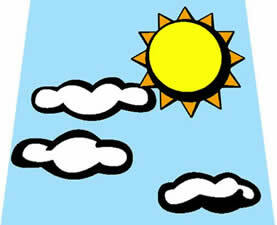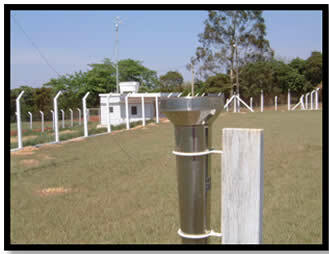The atmosphere is charged with water vapors, which are droplets of water (in a gaseous state) lighter than air. These water vapors come from the evaporation of water from the oceans. When they come together, they form clouds in the sky. Clouds are the result of condensation of water vapors present in the atmosphere.
At some point, the clouds will accumulate a lot of water vapor. As a result, gravity cannot support this load, with water precipitation in its liquid state. In other words, air is now lighter than water drops. This is what we know as rain.
In some cases, due to the high altitude of the clouds, temperatures are extremely low, remaining below zero degrees. Thus, small ice crystals form. When gravity cannot support this weight, there is precipitation of water in the form of ice, or so-called snow.

Clouds are water vapors in union
There are three types of rain: frontal, convective and orographic.
Frontal: when two air masses, hot and cold, collide. Water condenses and falls into liquid form.
Convective: when the hot air mass rises to the coldest layers of the atmosphere. That is, the hot air mass, loaded with water vapor, rises to higher and colder layers. Thus, water, in the gaseous state, undergoes condensation, precipitating in liquid form.
Orographic: calls from relief rains, they occur when hot, humid winds meet high relief areas, such as mountains.
To measure the amount of rain in a given location, the rain gauge is used.

Rain gauge: instrument used to measure the amount of rainwater
By Regis Rodrigues
Graduated in Geography
Take the opportunity to check out our video lesson on the subject:

